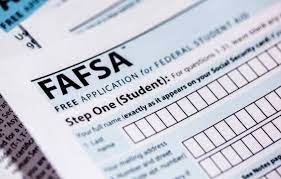The Free Application for Federal Student Aid (FAFSA) has long been considered one of most confusing and frustrating governmental forms, a 108-question gantlet of information on finances and family for students trying to pay for college. But for around 18% of FAFSA filers, the burden is even worse.
These students are selected for verification, a process in which aid applicants have to provide additional documentation, which can include tax returns, wage statements, and high school diplomas, to each institution to which they’re applying, as a way of proving that their FAFSA information is accurate.
“We’re talking about students who have already gone through a bunch of steps and feel like they’ve done what they need to do to prepare for college,” said Dr. Oded Gurantz, an assistant professor at the University of Colorado Boulder School of Education. “It’s a surprise for many students. It raises a lot of anxiety and fear because it’s much less publicized.”
Although the specifics of how students are selected for verification by the Department of Education are secret, research has shown that low-income and ethnic minority students are more likely to be picked. Previous studies have indicated that students chosen for verification were 2-6% less likely to immediately enroll in college, in line with a substantial literature showing that the higher the administrative burden of a program, the less likely it is that people will get its benefits.
However, a new paper on FAFSA verification, from Gurantz and Yung-Yu Tsai, a doctoral candidate at the University of Missouri Harry S. Truman School of Government and Public Affairs, has come up with a counterintuitive result: for the students in their sample, being selected for verification did not lower the likelihood of college attendance in either the short-term or the long-term. However, the researchers also found that verification had little impact on who received aid and how much, calling the necessity of the process into question.
Gurantz and Tsai analyzed over 460,000 first-time FAFSA submissions from Pell-eligible dependent students, those who were likely least familiar with the application and verification process. The records came from California. The researchers used machine learning to compare demographically similar students and analyzed the college enrollment of those who were and weren’t subject to verification. While previous studies used proxies for family income data like the median income from a student’s census tract or the questionnaire administered as part of the ACT, this research used actual information from FAFSA filings, giving it an advantage.
“They take a more robust analytic strategy,” said Dr. Alberto Guzman-Alvarez, a data scientist with the American Institutes of Research who has studied verification. “It’s an immaculately well-done study.”
According to Gurantz, there are several reasons that being selected for verification does not mean that students are less likely to enroll. These reasons stem from the fact all of the students selected for verification have already successfully filed the FAFSA. This may suggest that they are particularly motivated to go to college, regardless of the administrative burden. It’s also possible that this set of students is especially skilled at handling administrative challenges. These students may also be more likely to have a social network that can support them in understanding and acquiring the necessary documentation.
The researchers could not discount the possibility that their results were influenced by their data coming from California, a state which is economically friendly to college-goers. California has relatively low tuition rates for its public colleges and universities, and strong state-level aid programs, including the Cal Grant. Guzman-Alvarez thought that applying Gurantz and Tsai’s methods to data from other states might show a relationship between verification and enrollment.
“It’s a great example of a study that needs to be replicated in other contexts,” he said.
Gurantz and Tsai found that there was a relationship between verification and a loss of aid, but only a small one: a loss of $118 in the Pell Grant and $168 in the Cal Grant. This may be linked to a slight shift of students from more expensive four-year schools to two-year programs. Gurantz and Tsai found that the changes in federal aid came mostly from students failing to complete the verification process rather than verification leading to a revocation of aid. Overall, verification did not lead to much change in who got aid and how much.
This raises the question of whether a process that is so burdensome is really necessary.
“Verification is this policy that came out of the Reagan era when we had this idea of welfare queens who are trying to game the system, when we have evidence to counter that,” said Guzman-Alvarez. “There’s not this fraud that’s occurring.”
Gurantz and Tsai contrast verification to IRS audits, which occur at a much lower rate, but still have a deterrent effect. It’s a comparison that makes sense to Guzman-Alvarez.
“I’m always kind of astounded that we have this incredibly higher threshold for students who are simply trying to get an education,” he said.
A simpler version of the FAFSA will roll out this December, but it is not yet clear how verification will change. Gurantz and Tsai suggest that the government could remove part of the burden from students by making it easier to import data from different agencies. They also recommend that the government adjust the algorithm that it uses to select students for verification so that it picks fewer people.
“You could do a lot less verification,” said Gurantz, “and still get the same result.”
Jon Edelman can be reached at [email protected]





















